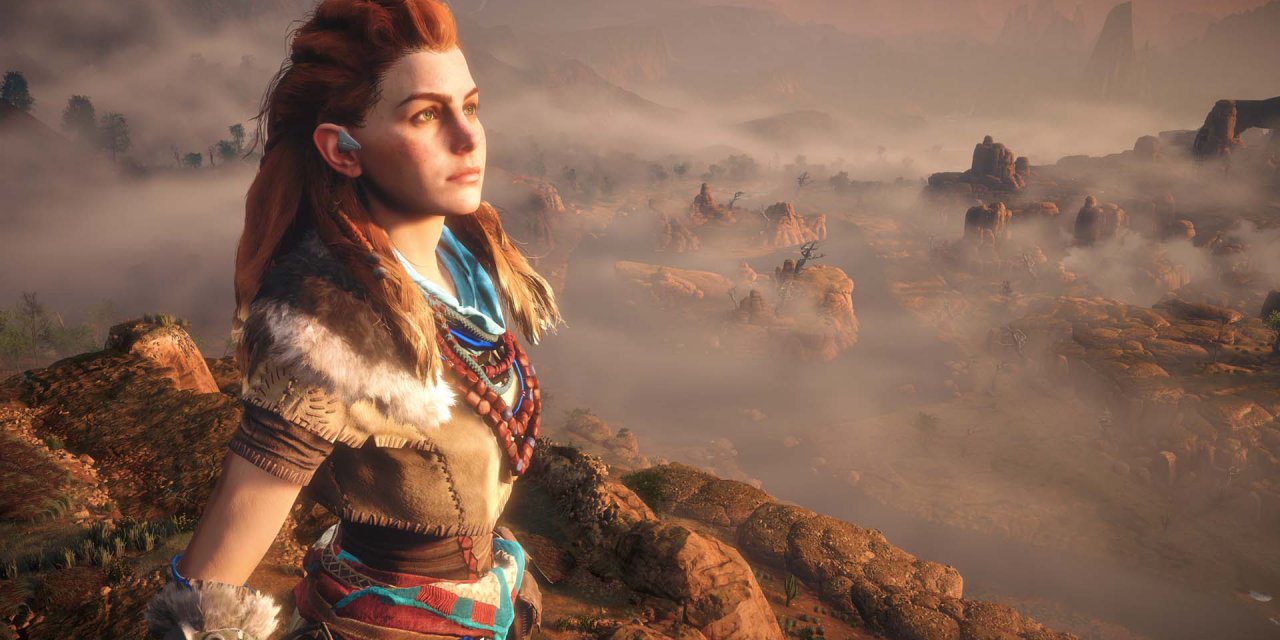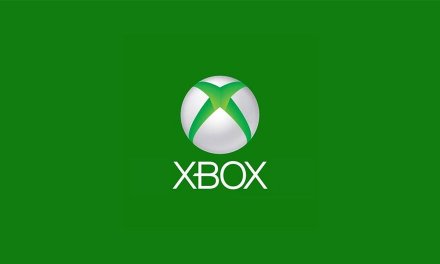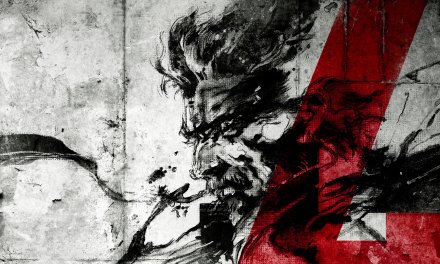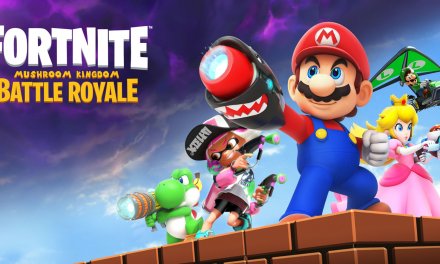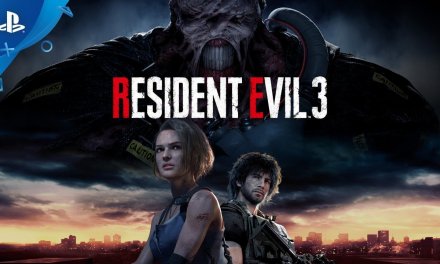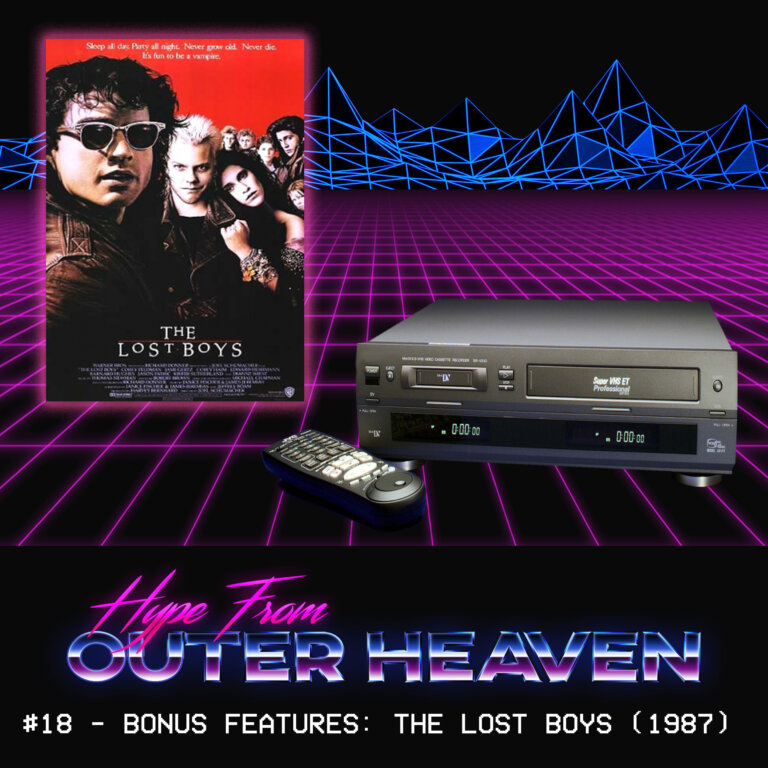“There’s so much more to discover before the world ends…”
Within the 50 hours I spent inside the world of Horizon Zero Dawn, I found myself in a sense of both awe and disbelief. The aesthetic tropes of the modern, open-world RPG and familiar ‘loot and craft’ style gameplay are both something that we’ve seen a lot of in triple-a releases of recent years; from the Far Cry series to the Witcher 3, the style of gameplay is considered by many to be an outdated format, in dire need of a fresh coat of paint. Developed by Guerrilla Games (who are mainly known for the Killzone series) the game has been in development since early 2011 and while the game shows a lot of similarities to previous open-world entries, it approaches them in a way the makes the medium feel both fresh and exciting, coupled with a unique setting and world that actively makes you want to explore it.
Horizon Zero Dawn puts you in the reigns of Aloy; a strong willed, nomadic, tribal hunter who has spent the first 19 years of her life under the care of the enigmatic outcast named Rost. Aloy and Rost exist within a vast, post-post-apocalyptic forestland known as the Embrace, which makes up a small part of the overall game map. The world itself genuinely feels alive, teeming with wildlife, alongside machines both minute and behemoth in stature, reminiscent of creatures of a bygone era. One of the strongest selling points of Horizon Zero Dawn is it’s setting, being set around a thousand years after the downfall of modern society; humanity regressed into a handful of nomadic tribes who coexist with numerous, different types of dangerous machines. The game’s theme aims to tackle a ‘what if’ scenario in which humanity has been knocked off the top of the food chain, while simultaneously tackling the juxtaposition of a world that is both beautiful and terrifying; It sets up a game map that is begging to be explored, not only for the lush and beautiful landscapes that the game provides, but to appeal to one’s sense of curiosity and appetite for adventure. As you traverse the world of Horizon, the various in game collectables begin to paint a picture as to what society used to be like before the fall; what caused the world to collapse? where are we in comparison to pre-apocalyptic times? are all questions that can be answered with the collectables alone, only to be further complemented and reinforced by the amazing main narrative.
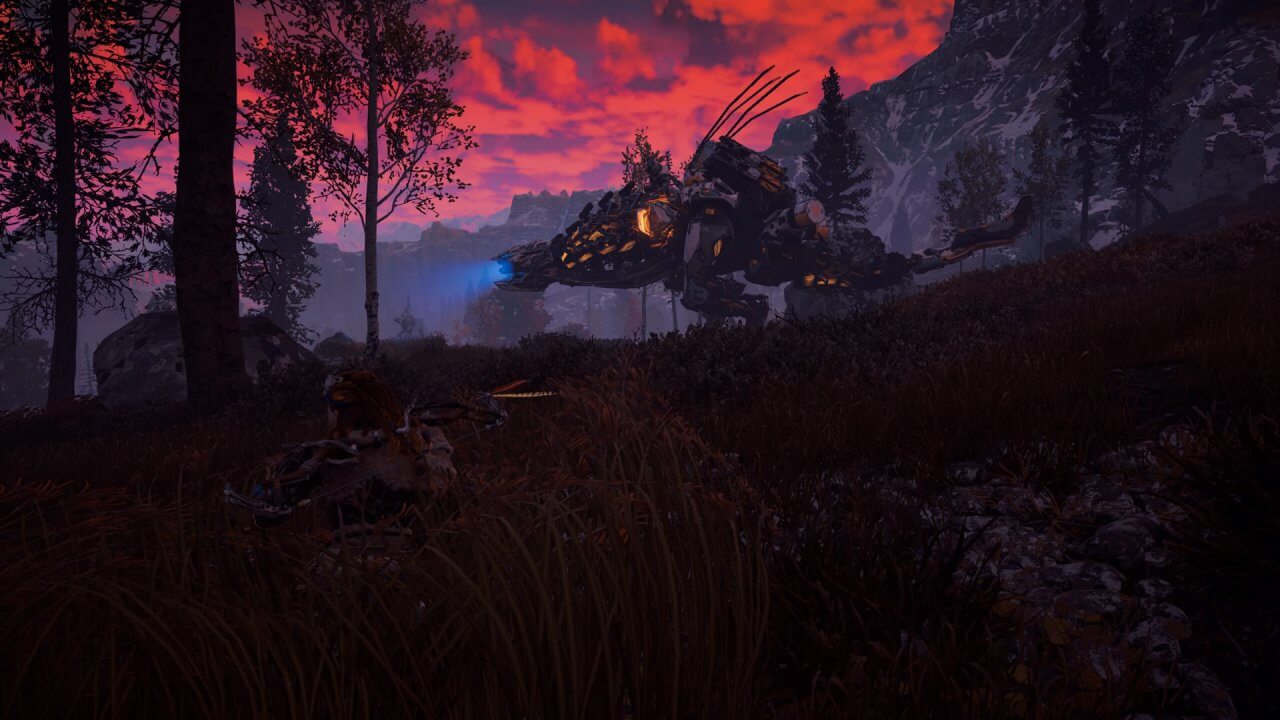
“The Thunderjaw: One of Horizon’s most formidable and terrifying foes.”
By far the most enjoyable part of Horizon is it’s multi layered combat system; at any point during the game you can seamlessly blend between stealth and head on combat, due to the accessibility of ‘safe zones’ where Aloy’s vibrant, ginger mane (we all know she’s got some Irish in her) blends with the environment offering a momentary lapse to break line of sight with the enemy. Offensively, the game offers a wide array of weaponry (with Bow’s being the obvious suspects) they offer different options for the various situations that the game throws at you, such as using elemental arrows to take down a machine weak against a certain element, or a tripcaster which allows you place traps and use the environment to your advantage. All of these features draw on the machines themselves, which all require a different approach for taking them down. While smaller machines such as Watchers and Striders can be dispatched with some ease, bigger machines such as the Bellowback have their own strengths and weaknesses and require you to take a slow, tactical approach to taking them down. The game offers no tutorials on how to to take the larger machines down, leaving it to the player to discover their weaknesses through ‘trial and error’ gameplay, reminiscent of games like Shadow of the Colossus. When you eventually learn to take down the larger machines (I still warmly remember taking down my first Thunderjaw) the sense of achievement and satisfaction the game gives you is unrivalled, strengthening the risk vs. reward style gameplay.
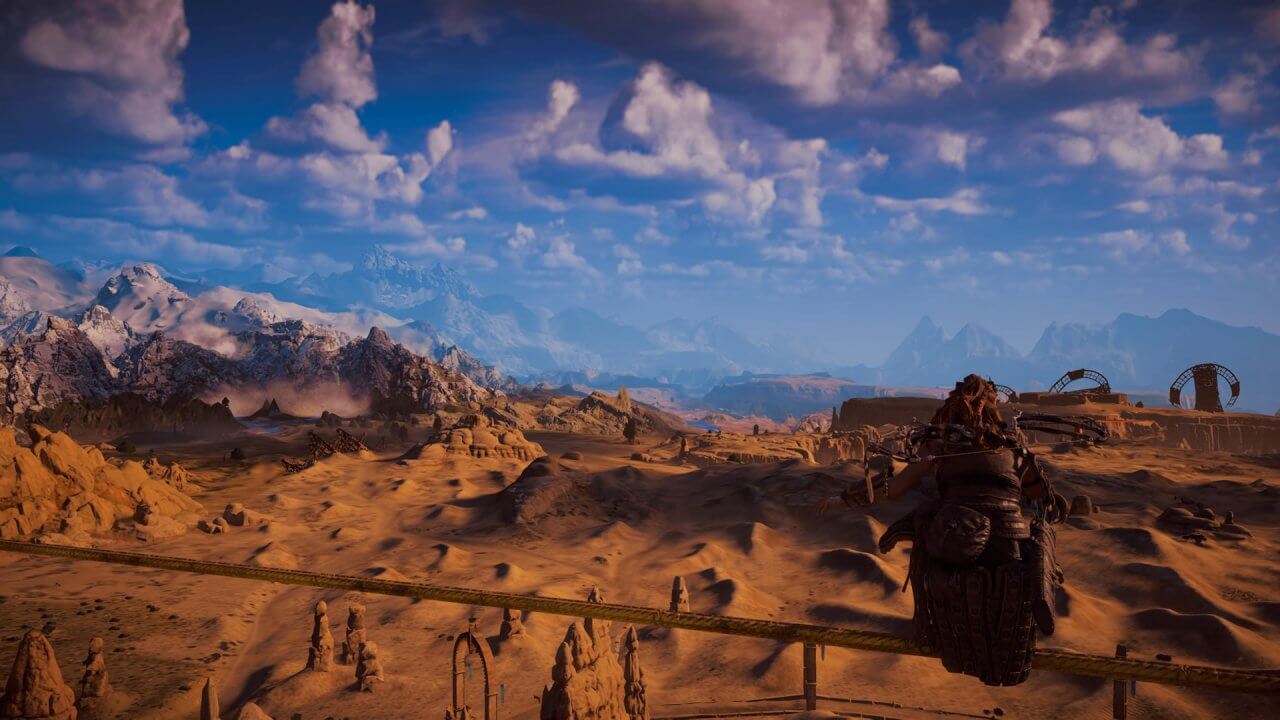
On a base level Horizon Zero Dawn is a technical marvel, running at a solid 30fps on a launch PS4 through all areas of the gameplay, only dropping frame rate slightly in some areas, which is concealed well by the in game motion blur. The Decima engine renders the world and its inhabitants with crisp beauty and fidelity, with no low resolution textures in sight. The weather system surprisingly doesn’t affect the frame rate of the game, and offers dynamic weather changes based on where you are located within the game world. If I was to have one criticism with the system it’s how the weather comes and goes as quickly as it appears, and while it would be nice to see a smoother transition between weather states, it’s nothing that breaks the gameplay or immersion. The PS4 Pro version has some upgraded features which the launch PS4 misses out on; most notably the inclusion of 4K checkerboard rendering running at a stable 30fps (dipping to 28fps on occasion). As of patch 1.02 the PS4 Pro has the ability to change between rendering state, favouring either performance or resolution, meaning players can opt in for a lower, 1080p resolution but with a much more solid and stable frame rate. Overall the Decima engine is an impressive beast with what it can accomplish, so much so that even our one true lord and saviour Hideo Kojima has described it as a ‘Rocket’ and is going to be using the engine for his highly anticipated Death Stranding.
Horizon Zero Dawn is the fresh coat of paint I think the open world genre has needed for a long time; while influences from other games can be clearly seen throughout, the world presents them in a way that blends fluidly with the gameplay, resulting in a solid, unforgettable experience. Couple this with a tight, focused narrative exploring the very destructive nature of ourselves and it’s safe to say that Horizon Zero Dawn is one of the strongest contender’s for Game of the Year 2017 and one of my overall favourite games I’ve played in recent years. This is one game that any PlayStation owner owes it to themselves to play, and just further reinforces the idea that Sony is king when it comes to releasing quality, AAA exclusives for the Playstation brand.

